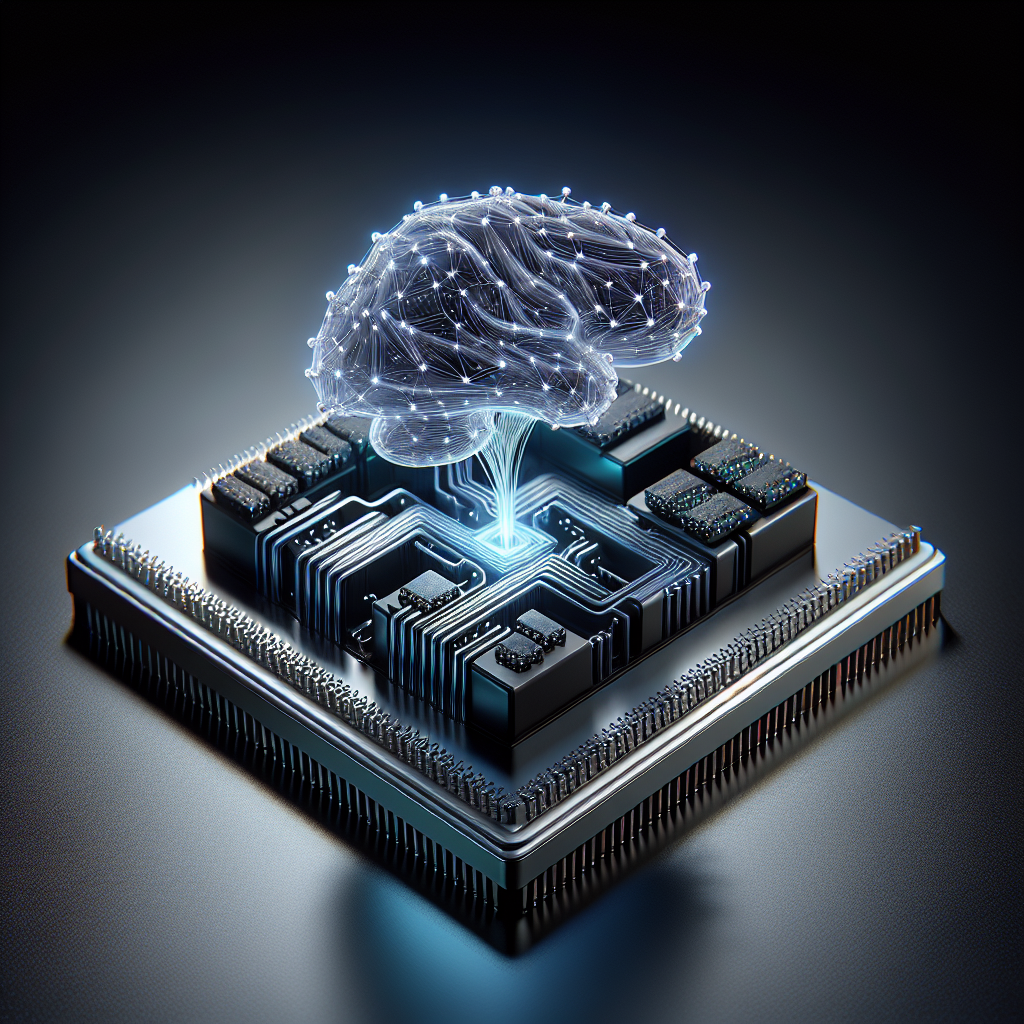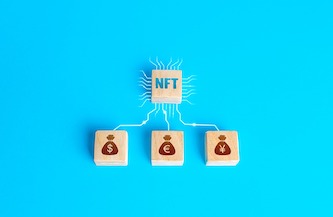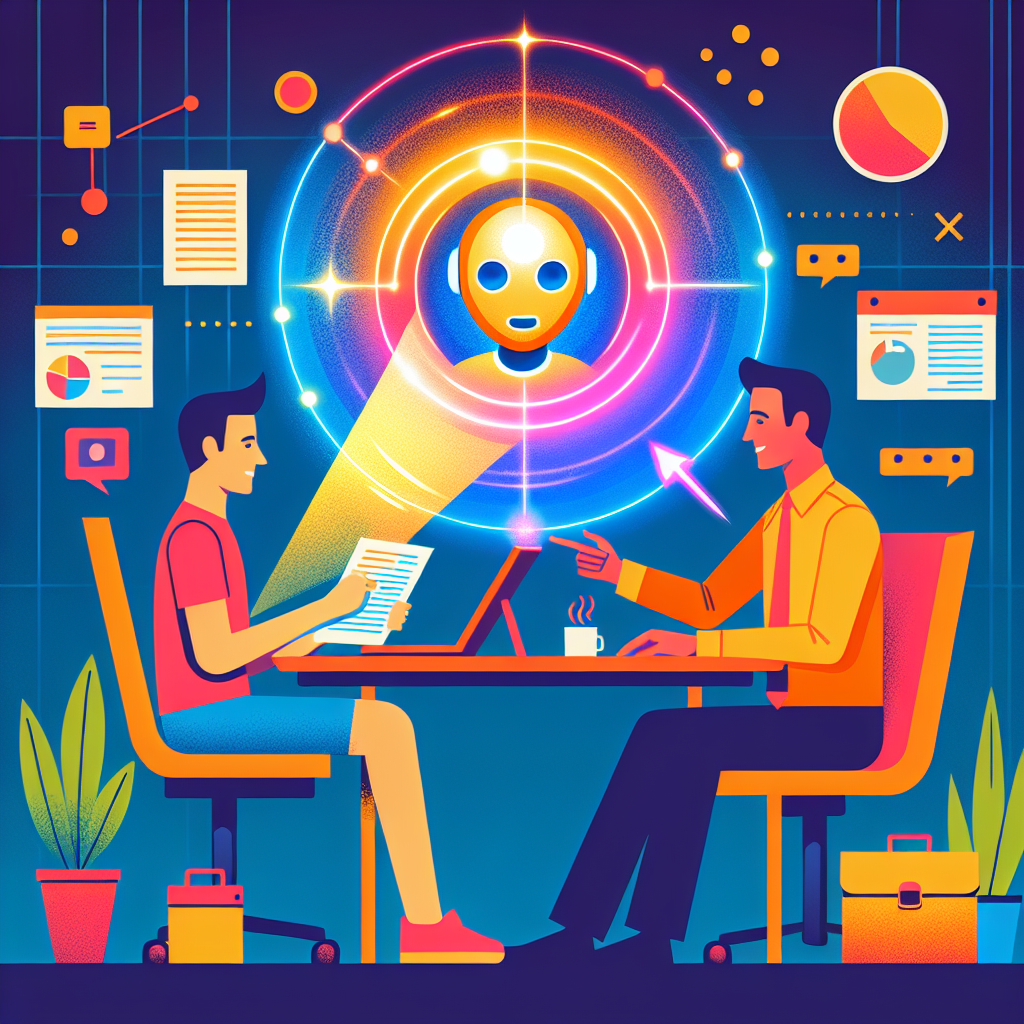By 2026, the need for electricity from data centers, AI, and cryptocurrency will be twice as much as today. To solve this problem, some companies are creating neuromorphic computers, which work like the human brain. These computers could use less energy and work faster than regular computers. Companies like SpiNNcloud Systems, Intel, and IBM are already trying to make these new computers available to everyone.
Neuromorphic computers are different from regular ones in many ways. They have memory and processing units on one chip, which saves energy by reducing data transfer. They also work only when needed, like our brains, which helps save even more energy. Although there are still some problems to fix, people believe neuromorphic computers could change how we use AI and other technologies.
In the future, we might use a mix of regular, neuromorphic, and quantum computers to meet different needs. Neuromorphic computing is still new, but it has the potential to make computers much more efficient and powerful. Big companies and small startups are interested in this technology. With more improvements, neuromorphic computing could become a big deal in the tech world.
Original news source: Could brain-like computers be a ‘competition killer’? (BBC)
🎧 Listen:
Slow
Normal
Fast
📖 Vocabulary:
| 1 | neuromorphic | Computers that work like the human brain |
| 2 | cryptocurrency | Digital money used online |
| 3 | processing | Handling and organizing information |
| 4 | transfer | Moving something from one place to another |
| 5 | efficient | Doing something in a way that saves time and energy |
| 6 | potential | The ability to become something in the future |
| 7 | startups | New small businesses |
| 8 | improvements | Making something better |
| 9 | available | Something you can use or get |
| 10 | technologies | Tools and machines created by science |
| 11 | electricity | Power that makes machines work |
| 12 | data | Information that is collected and used |
Group or Classroom Activities
Warm-up Activities:
– News Summary
Instructions:
1. Divide the class into small groups.
2. Give each group a copy of the article.
3. Instruct the groups to read the article and summarize it in 3-5 sentences.
4. Each group will then present their summary to the class.
– Vocabulary Pictionary
Instructions:
1. Write down a list of vocabulary words from the article on separate cards.
2. Divide the class into pairs.
3. Give each pair a set of vocabulary cards.
4. Instruct one student from each pair to pick a card and draw a picture representing the word, while the other student guesses the word.
5. After a certain amount of time, switch roles.
6. The pair with the most correct guesses wins.
– Pros and Cons
Instructions:
1. Divide the class into two groups.
2. Assign one group to list the pros (advantages) of neuromorphic computers, and the other group to list the cons (disadvantages).
3. Give the groups a few minutes to brainstorm and write down their ideas.
4. Each group will then present their list to the class.
5. Encourage class discussion and debate about the pros and cons.
– Think-Pair-Share
Instructions:
1. Instruct the class to think about how neuromorphic computers could impact their daily lives and the future of technology.
2. Have students pair up and discuss their thoughts with their partner.
3. After a few minutes of discussion, ask each pair to share their ideas with the rest of the class.
4. Encourage students to listen and respond to each other’s ideas.
– Future Predictions
Instructions:
1. Ask the class to imagine what technology will be like in 10 years.
2. Give each student a piece of paper and have them write down their predictions about how neuromorphic computers will be used and what other advancements in technology they expect to see.
3. Collect the papers and read a few predictions out loud, encouraging class discussion and sharing of ideas.
🤔 Comprehension Questions:
1. What is the problem that some companies are trying to solve?
2. How are neuromorphic computers different from regular computers?
3. Why do neuromorphic computers use less energy?
4. What are some companies that are working on creating neuromorphic computers?
5. How could neuromorphic computers change how we use AI and other technologies?
6. What other types of computers might we use in the future?
7. Why are big companies and small startups interested in neuromorphic computing?
Go to answers ⇩
🎧✍️ Listen and Fill in the Gaps:
By 2026, the (1)______ for (2)______ from data centers, AI, and cryptocurrency will be twice as much as today. To (3)______ this problem, some companies are creating neuromorphic computers, which work like the human brain. These computers could use less energy and work faster than regular computers. Companies like (4)______ Systems, Intel, and IBM are already trying to make these new (5)______ available to everyone.
Neuromorphic computers are different from regular (6)______ in many ways. They have memory and processing units on one chip, which saves energy by reducing data transfer. They also work only when needed, like our brains, which helps (7)______ even (8)______ energy. Although there are still some problems to fix, (9)______ believe neuromorphic computers could change how we use AI and other technologies.
In the future, we might use a mix of regular, neuromorphic, and quantum computers to meet different needs. Neuromorphic computing is still new, but it has the potential to make computers much more efficient and powerful. Big (10)______ and small startups are interested in this technology. With more (11)______, neuromorphic computing could become a big (12)______ in the tech world.
Go to answers ⇩
💬 Discussion Questions:
Students can ask a partner these questions, or discuss them as a group.
1. What is a data center?
2. How would you feel if you had a computer that used less energy and worked faster?
3. Do you like the idea of computers that work only when needed? Why or why not?
4. What do you think are some problems that need to be fixed with neuromorphic computers?
5. How do you think neuromorphic computers could change how we use AI and other technologies?
6. Do you think using a mix of regular, neuromorphic, and quantum computers is a good idea? Why or why not?
7. Why do you think big companies and small startups are interested in neuromorphic computing?
8. How do you think neuromorphic computing could make computers more efficient and powerful?
9. What other improvements do you think could be made to neuromorphic computing?
10. How do you think neuromorphic computing could be a big deal in the tech world?
11. What is one thing you would like to see neuromorphic computers do in the future?
12. Do you think you would like to use a neuromorphic computer? Why or why not?
Individual Activities
📖💭 Vocabulary Meanings:
Match each word to its meaning.
Words:
1. neuromorphic
2. cryptocurrency
3. processing
4. transfer
5. efficient
6. potential
7. startups
8. improvements
9. available
10. technologies
11. electricity
12. data
Meanings:
(A) New small businesses
(B) Moving something from one place to another
(C) Information that is collected and used
(D) Tools and machines created by science
(E) Something you can use or get
(F) Making something better
(G) Digital money used online
(H) Doing something in a way that saves time and energy
(I) Computers that work like the human brain
(J) The ability to become something in the future
(K) Power that makes machines work
(L) Handling and organizing information
Go to answers ⇩
🔡 Multiple Choice Questions:
1. What is the purpose of creating neuromorphic computers?
(a) To solve the increasing need for electricity from data centers, AI, and cryptocurrency
(b) To make regular computers faster
(c) To reduce the use of AI and other technologies
(d) To save energy by using less electricity
2. How are neuromorphic computers different from regular computers?
(a) They use more energy than regular computers
(b) They work all the time, even when not needed
(c) They are slower than regular computers
(d) They have memory and processing units on one chip
3. What is one advantage of neuromorphic computers?
(a) They are cheaper than regular computers
(b) They save energy by reducing data transfer
(c) They are already available to everyone
(d) They are smaller in size than regular computers
4. What is one way that neuromorphic computers are similar to our brains?
(a) They have memory and processing units on one chip
(b) They use more energy than regular computers
(c) They are slower than regular computers
(d) They work only when needed
5. How might we use different types of computers in the future?
(a) Only neuromorphic computers
(b) Only regular computers
(c) A mix of regular, neuromorphic, and quantum computers
(d) Only quantum computers
6. Who is interested in neuromorphic computing?
(a) Only big companies
(b) Big companies and small startups
(c) Only small startups
(d) No one is interested in it
7. What could neuromorphic computing become in the tech world?
(a) A big deal
(b) A small improvement
(c) A useless technology
(d) A slower version of regular computers
8. What is the main idea of the article?
(a) Regular computers are better than neuromorphic computers
(b) Neuromorphic computers are already available to everyone
(c) Neuromorphic computers could solve the increasing need for electricity and make computers more efficient and powerful
(d) Neuromorphic computers are slower and use more energy than regular computers
Go to answers ⇩
🕵️ True or False Questions:
1. These new computers could use less energy and work faster than regular computers.
2. Organizations such as SpiNNcloud Systems, Intel, and IBM are not focused on ensuring that these new computers are accessible to the public.
3. Although there are still some problems to fix, people believe neuromorphic computers could change how we use AI and other technologies.
4. In the future, we will need twice as much electricity from data centers, AI, and cryptocurrency as we do now.
5. In the future, we may not rely on a combination of regular, neuromorphic, and quantum computers to address diverse requirements.
6. Neuromorphic computers lack memory and processing units on a single chip, which saves energy by minimizing data transfer.
7. Some companies are developing computers that function similarly to the human brain to address the issue of requiring less electricity.
8. Neuromorphic computers work only when needed, like our brains, which helps save even more energy.
Go to answers ⇩
📝 Write a Summary:
Write a summary of this news article in two sentences.
Check your writing now with the best free AI for English writing!
Writing Questions:
Answer the following questions. Write as much as you can for each answer.
Check your answers with our free English writing assistant!
1. What are some examples of technologies that will need more electricity in the future?
2. How are neuromorphic computers different from regular computers?
3. What are some ways that neuromorphic computers can save energy?
4. How do people think neuromorphic computers could change the way we use AI and other technologies?
5. Why are big companies and small startups interested in neuromorphic computing?
✅ Answers
🤔✅ Comprehension Question Answers:
1. What is the problem that some companies are trying to solve?
The problem that some companies are trying to solve is the increasing need for electricity from data centers, AI, and cryptocurrency.
2. How are neuromorphic computers different from regular computers?
Neuromorphic computers are different from regular computers because they have memory and processing units on one chip, which saves energy by reducing data transfer. They also work only when needed, like our brains, which helps save even more energy.
3. Why do neuromorphic computers use less energy?
Neuromorphic computers use less energy because they have memory and processing units on one chip, which reduces the amount of data transfer. They also work only when needed, which helps save even more energy.
4. What are some companies that are working on creating neuromorphic computers?
Some companies that are working on creating neuromorphic computers are SpiNNcloud Systems, Intel, and IBM.
5. How could neuromorphic computers change how we use AI and other technologies?
Neuromorphic computers could change how we use AI and other technologies by making them more efficient and powerful. They could help us solve problems faster and use less energy.
6. What other types of computers might we use in the future?
In the future, we might use a mix of regular, neuromorphic, and quantum computers to meet different needs.
7. Why are big companies and small startups interested in neuromorphic computing?
Big companies and small startups are interested in neuromorphic computing because it has the potential to make computers much more efficient and powerful. It could be a big deal in the tech world and bring new opportunities for innovation and growth.
Go back to questions ⇧
🎧✍️✅ Listen and Fill in the Gaps Answers:
(1) need
(2) electricity
(3) solve
(4) SpiNNcloud
(5) computers
(6) ones
(7) save
(8) more
(9) people
(10) companies
(11) improvements
(12) deal
Go back to questions ⇧
📖💭✅ Vocabulary Meanings Answers:
1. neuromorphic
Answer: (I) Computers that work like the human brain
2. cryptocurrency
Answer: (G) Digital money used online
3. processing
Answer: (L) Handling and organizing information
4. transfer
Answer: (B) Moving something from one place to another
5. efficient
Answer: (H) Doing something in a way that saves time and energy
6. potential
Answer: (J) The ability to become something in the future
7. startups
Answer: (A) New small businesses
8. improvements
Answer: (F) Making something better
9. available
Answer: (E) Something you can use or get
10. technologies
Answer: (D) Tools and machines created by science
11. electricity
Answer: (K) Power that makes machines work
12. data
Answer: (C) Information that is collected and used
Go back to questions ⇧
🔡✅ Multiple Choice Answers:
1. What is the purpose of creating neuromorphic computers?
Answer: (a) To solve the increasing need for electricity from data centers, AI, and cryptocurrency
2. How are neuromorphic computers different from regular computers?
Answer: (d) They have memory and processing units on one chip
3. What is one advantage of neuromorphic computers?
Answer: (b) They save energy by reducing data transfer
4. What is one way that neuromorphic computers are similar to our brains?
Answer: (d) They work only when needed
5. How might we use different types of computers in the future?
Answer: (c) A mix of regular, neuromorphic, and quantum computers
6. Who is interested in neuromorphic computing?
Answer: (b) Big companies and small startups
7. What could neuromorphic computing become in the tech world?
Answer: (a) A big deal
8. What is the main idea of the article?
Answer: (c) Neuromorphic computers could solve the increasing need for electricity and make computers more efficient and powerful
Go back to questions ⇧
🕵️✅ True or False Answers:
1. These new computers could use less energy and work faster than regular computers. (Answer: True)
2. Organizations such as SpiNNcloud Systems, Intel, and IBM are not focused on ensuring that these new computers are accessible to the public. (Answer: False)
3. Although there are still some problems to fix, people believe neuromorphic computers could change how we use AI and other technologies. (Answer: True)
4. In the future, we will need twice as much electricity from data centers, AI, and cryptocurrency as we do now. (Answer: True)
5. In the future, we may not rely on a combination of regular, neuromorphic, and quantum computers to address diverse requirements. (Answer: False)
6. Neuromorphic computers lack memory and processing units on a single chip, which saves energy by minimizing data transfer. (Answer: False)
7. Some companies are developing computers that function similarly to the human brain to address the issue of requiring less electricity. (Answer: False)
8. Neuromorphic computers work only when needed, like our brains, which helps save even more energy. (Answer: True)
Go back to questions ⇧













